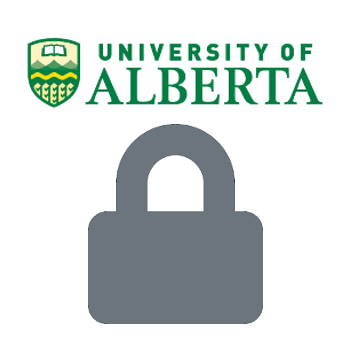This decommissioned ERA site remains active temporarily to support our final migration steps to https://ualberta.scholaris.ca, ERA's new home. All new collections and items, including Spring 2025 theses, are at that site. For assistance, please contact erahelp@ualberta.ca.

Item Restricted to University of Alberta Users
Log In with CCID to View Item- 191 views
- 1 download
Field Studies of Semi-Passive Biogeochemical Treatment of Acid Rock Drainage at the Island Copper Mine Pit Lake
-
- Author(s) / Creator(s)
-
On-land waste rock dumps at BHP Billiton Base Metals’ Island Copper Mine (ICM) near the northern end of Vancouver Island, B.C. continue to discharge ARD. These waters, which amount to approximately five million cubic metres each year, are injected into a three-layer, meromictic pit lake for treatment. The top layer is brackish water, replenished by each year’s rainfall (amounting to nearly 2 m/year). This top layer of water must meet effluent permit limits for heavy metals. This water eventually exfiltrates through a ‘beach’ waste rock dump, which is 93 per cent submerged along the north shore of Rupert Inlet. The middle and bottom layers of the Pit Lake are saline and currently oxic (2 mg/L dissolved oxygen) and anoxic (0.03 mg/L dissolved oxygen), respectively. Spreading of a liquid fertilizer every ten days throughout the top layer results in plankton and bacterial blooms that scavenge zinc, copper and cadmium out of this layer eventually to become mineral sediment in the bottom of the pit lake. Adsorption on planktonic skeletons and mineral precipitates also scavenges these dissolved metals from the middle and bottom layers to form bottom sediment. Sulfate reduction has recently begun in the bottom sediments. Diagenetic processes in the bottom sediments will eventually transform most of the dissolved heavy metals into insoluble sulfides. Cycling of ferric iron between the sediment and the water column and back seems to contribute dramatically to the biogeochemical metal removal processes. This biogeochemical system serves to maintain the top-layer water well within permit limits for discharge to the environment.
-
- Date created
- 2003
-
- Type of Item
- Article (Published)
-
- License
- Use of this product is restricted to current faculty, staff, and students of the University. It is the responsibility of each user to ensure that he or she uses this product for individual, non-commercial educational or research purposes only, and does not systematically download or retain substantial portions of information. Users may not reproduce or redistribute unprocessed/raw data portions of the data to any third party, or otherwise engage in the systematic retransmission or commercialization of the data.